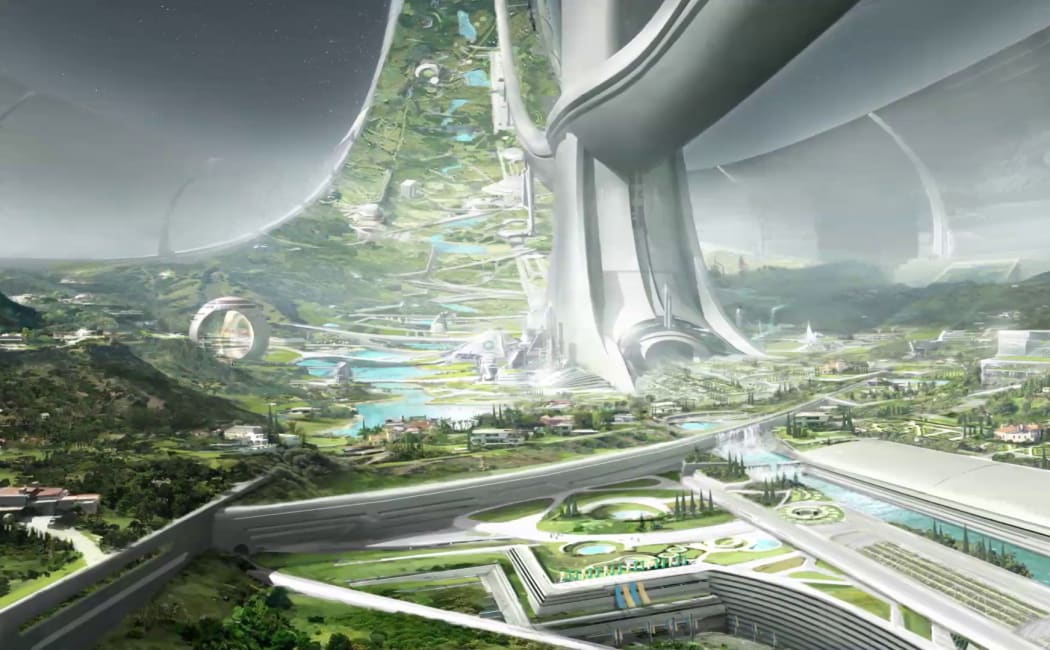How One Scientist’s Dream of Giant Space Cities Was Crushed by Reality

How One Scientist’s Dream of Giant Space Cities Was Crushed by Reality
Once envisioned as floating paradises among the stars, space habitats could have changed the way humanity lives forever. But the vision of building massive rotating space cities faded before it could become a reality.
The Bold Vision of Space Cities
In the 1970s, one man dared to imagine what life beyond Earth could truly look like. Gerard K. O’Neill, a Princeton physicist, believed humanity would be living in giant cylindrical habitats in space by the early 21st century. His idea wasn’t just science fiction—it was a carefully designed plan for self-sustaining space colonies capable of housing millions of people.
These massive space cities were envisioned to orbit at the L5 Lagrange point between Earth and the Moon. Unlike small stations like the International Space Station (ISS), O’Neill’s habitats would have had rivers, forests, homes, farms, and even transportation systems.
What O’Neill Imagined
O’Neill’s dream was detailed in his best-selling book, The High Frontier, published in 1976. He proposed rotating cylinders several miles long to simulate Earth-like gravity through centrifugal force. His largest concept, known as “Island Three,” would stretch 20 miles in length and provide 500 square miles of livable surface.
Each habitat would feature a balanced ecosystem, with agriculture and industry placed in separate zones to maintain clean living spaces. Electric transport systems—called “commuterspheres”—would make moving between habitats cheap and fast. At the time, O’Neill estimated just $0.50 per trip (in 1970s dollars).
The Reality of 2025
Fast-forward to 2025. Humanity hasn’t built floating cities in space. Instead, only a few hundred astronauts have experienced life beyond Earth—mostly through short missions aboard the ISS and other temporary stations. The grand dream of colonizing space remains, for now, a vision rather than a reality.
The main reasons for this failure are technological challenges, high costs, and lack of political will. Although the technology of the 1970s laid some groundwork, scaling it up to build entire cities proved to be an entirely different challenge.
The Engineering Behind the Dream
O’Neill’s plan relied on mining materials from the Moon and asteroids using electromagnetic launch systems called mass drivers. These payloads would then be used to construct the habitats at the L5 point.
He also envisioned artificial day-night cycles created through giant mirrors and carefully angled windows, allowing sunlight to shine in while maintaining the illusion of a stationary sun. The result would be a controlled climate and a sustainable biosphere.
But the biological and environmental systems required to make this sustainable are extremely complex. Recreating Earth’s soil, water cycles, and ecosystems in a closed system is one of the biggest scientific challenges even today.
The Cost Barrier
One of the biggest hurdles was cost. O’Neill estimated the first habitat would require around $200 billion in 1970s currency— equivalent to over $1 trillion in 2025. That kind of investment is massive, even for today’s largest space agencies or private companies.
The failure of the Space Shuttle Program also played a major role. Originally expected to fly hundreds of missions per year, it only managed 135 flights over 30 years, making large-scale construction in orbit impractical.
Social and Ethical Concerns
Even if we could build these habitats, another issue arises: who gets to live in space? If these space cities were built, they might end up being havens for the wealthy, increasing the gap between rich and poor.
Overpopulation on Earth wouldn’t be solved by moving a few million people into orbit. And the infrastructure required to make it accessible to everyone is far from ready.
Why the Dream Still Matters
Although O’Neill’s vision didn’t come true, it remains a powerful symbol of human imagination and ambition. Space cities could act as humanity’s backup plan in case of catastrophic events on Earth. They also inspire innovation in space architecture, sustainable habitats, and AI-driven ecosystem management.
In recent years, companies and agencies like NASA, SpaceX, and Blue Origin have revived discussions about space habitats, lunar bases, and Mars colonies. O’Neill’s ideas continue to shape how we think about the future of humanity in space.
The Future of Space Colonization
As technology advances—especially in AI, robotics, renewable energy, and launch systems—the idea of space cities is slowly becoming more realistic. Mega-constellations, private space stations, and lunar outposts are laying the groundwork.
It may take decades, but the dream of living among the stars is far from dead. The vision of O’Neill’s space habitats may not have happened in his lifetime, but it continues to inspire engineers, scientists, and visionaries around the world.
